How to Choose the Right Web Design Company: 10 Tips

Stellar web design is like gravity; it draws people in and keeps them orbiting around your content.
When a website sports engaging graphics and a layout that’s both eye-catching and intuitive, it doesn’t just catch a visitor’s eye; it captures their interest. It’s the difference between a fleeting glance and a lasting engagement.
In a world where attention spans are shorter than a goldfish’s memory, the power of compelling web design can’t be understated. It stops web users in their tracks and turns the casual browser into an engaged audience member poised to take action.
But let’s get something straight: crafting such a digital masterpiece isn’t a piece of cake. It’s not a job for just any Tom, Dick, or Harry with a laptop and a copy of Photoshop.
Quality web design is a blend of art and science; it requires a mix of creativity, technical skills, and a deep understanding of online user behavior. The goal is to create a visually pleasing and functionally seamless experience.
You need a professional website design company that wields experience, expertise, and the kind of know-how that can transform your website from a digital placeholder into a powerhouse.
That’s precisely what we’re diving into in this blog. We’re here to guide small to medium-sized businesses through the maze of choosing the right web design company. One that aligns with your business model, speaks to your industry, resonates with your audience, and fits snugly with your unique requirements.
Are you ready to find the web design needle in the rough? Our guide is ready. Let’s show you the way!
1. Assess Their Portfolio for Diversity and Quality

When embarking on the quest for the right web design company, the portfolio is your first port of call.
This isn’t just a gallery of past work; it’s a window into the company’s design soul. You’re not just looking for pretty pictures; you’re searching for a narrative of diversity, adaptability, and excellence.
A portfolio with a wide range of industries represented is a testament to the company’s ability to adapt and innovate. It shows they can step into the shoes of different audiences, understand their unique business requirements, and translate them into compelling web design.
A portfolio that includes everything from sleek corporate sites to vibrant eCommerce platforms indicates a web design company’s chameleon-like ability to adjust its design ethos to suit the client’s unique brand voice and objectives.
Quality, however, is the non-negotiable companion of diversity. It’s one thing to span a broad spectrum of styles; it’s another to maintain high standards across the board.
Scrutinize the details: the alignment of elements, the use of space, the interplay of colors and fonts, and so on. These nuances speak volumes about the company’s attention to detail and commitment to quality.
Look for designs that not only catch your eye but also hold your attention. A well-crafted website should tell a coherent visual story, with each element purposefully contributing to an engaging user experience.
And don’t just stop there. Always dive deeper. How do these designs translate into user engagement and conversion rates? A portfolio may look dazzling, but if it doesn’t convert visitors into customers or followers, it’s missing a critical piece of the puzzle.
The crème de la crème of web design companies are always willing to provide case studies or performance metrics with their portfolios. This data can give you insights into how their designs have impacted client success.
We also recommend considering the age of the projects in the portfolio. Are your web design experts keeping up with the latest trends? Or does their work feel stuck in a time warp?
Web design is a fast-evolving field. Staying relevant is key. A web design company that keeps pace with the evolving landscape demonstrates a commitment to continuous learning and growth. These traits are essential for a field that melds art, technology, and user experience.
Instead of just admiring the portfolio from a distance, actively engage with it. Visit the live sites if possible. Interact with the design as a user would.
- Is the navigation intuitive?
- Do the sites load quickly?
- Are they mobile-friendly?
This firsthand experience can provide you with a more tangible sense of the company’s capabilities.
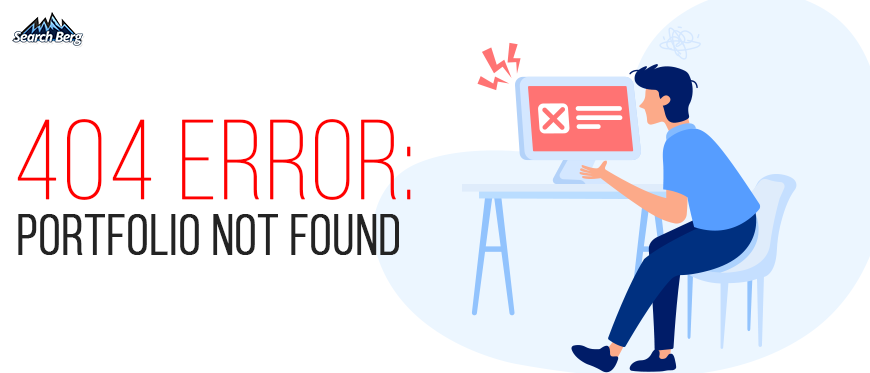
You may encounter situations where a portfolio isn’t readily displayed on a company’s website. This absence can initially be puzzling (especially in an industry where showcasing past work seems like a natural marketing strategy). However, it’s important to understand that this practice isn’t necessarily a red flag. There are various legitimate reasons why a company may not display their portfolio publicly.
Firstly, some web design companies deal with clients who require nondisclosure agreements (NDAs). In these cases, the website designers are legally prevented from disclosing their work. This is often the case with high-profile clients or projects that involve sensitive or proprietary information.
Secondly, a company may opt for a more personalized approach to presenting its work. They may prefer to share their portfolio directly with potential clients in a tailored format and curate projects that are more relevant to the client’s industry or specific needs. This bespoke approach allows them to present the work in a context that aligns more closely with your project requirements.
If you don’t find a portfolio on a company’s website, don’t hesitate to reach out and request one. Trusted web design companies are more than willing to provide a portfolio upon request. This interaction also opens a line of communication that can be beneficial for future discussions. It gives you a chance to start a dialogue, ask questions, and gauge their responsiveness and willingness to engage with potential clients.
And if you do find a portfolio but it seems less diverse or extensive than you’d hoped for, it’s a good practice to inquire if they have more examples to share. Web design agencies often only display a selection of projects online that they feel best represent their brand or style. However, they may have a broader range of work that can be shared upon request.
Asking for more examples can provide a more comprehensive view of their capabilities and versatility.
2. Check for Custom Design Capabilities
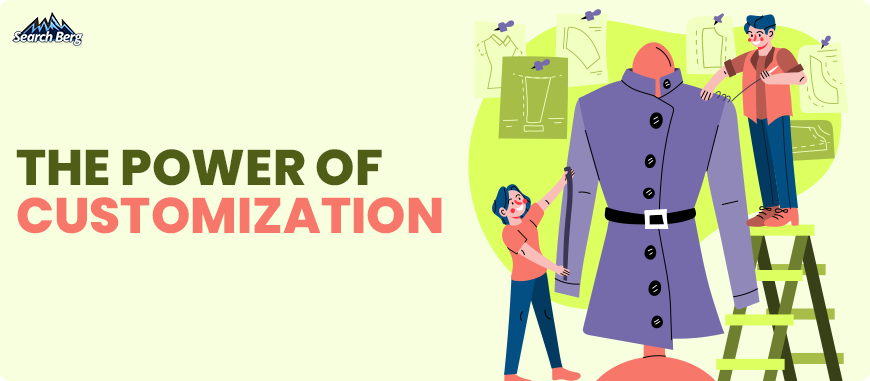
Setting up a cookie-cutter website is kind of like showing up to a gala in off-the-rack attire. It may do the job, no qualms about it, but it certainly won’t turn heads.
This is where checking for custom design capabilities becomes pivotal. It’s important to choose a web design agency that doesn’t just fill in the blanks on a template but crafts a site that’s as unique as your business fingerprint.
2.1. Tailored to Your Brand’s DNA
Custom design in web development is akin to crafting a bespoke suit. Every stitch, fabric choice, and fitting is done with the individual’s unique measurements and preferences in mind.
Similarly, a website that’s tailored to your brand’s DNA is meticulously crafted; it reflects your brand’s ethos, values, and uniqueness. This process goes beyond superficial aesthetics; it’s about creating a digital identity that resonates with your brand’s core and speaks directly to your audience.
The first step in this process is developing a deep understanding of your brand. A skilled web design company will begin with thorough research and discussions to grasp what makes your business tick.
They’ll dive into your history, values, mission, and the subtleties that set you apart from your competitors. They won’t just look at what you do; they’ll understand how you do it and why. They’ll dissect the story behind your services or products, your company culture, and your vision for the future.
Once they have a grasp of your brand identity, the real art begins. This involves translating this understanding into tangible design elements: colors, fonts, imagery, and layout.
For example, a luxury brand may require web design that exudes elegance and exclusivity. After doing their research, the right web design agency will use a mix of muted color palettes, high-quality visuals, and sophisticated typography accordingly. The outcome? Something like Bottega Veneta’s clean, minimalist, and sleek website.
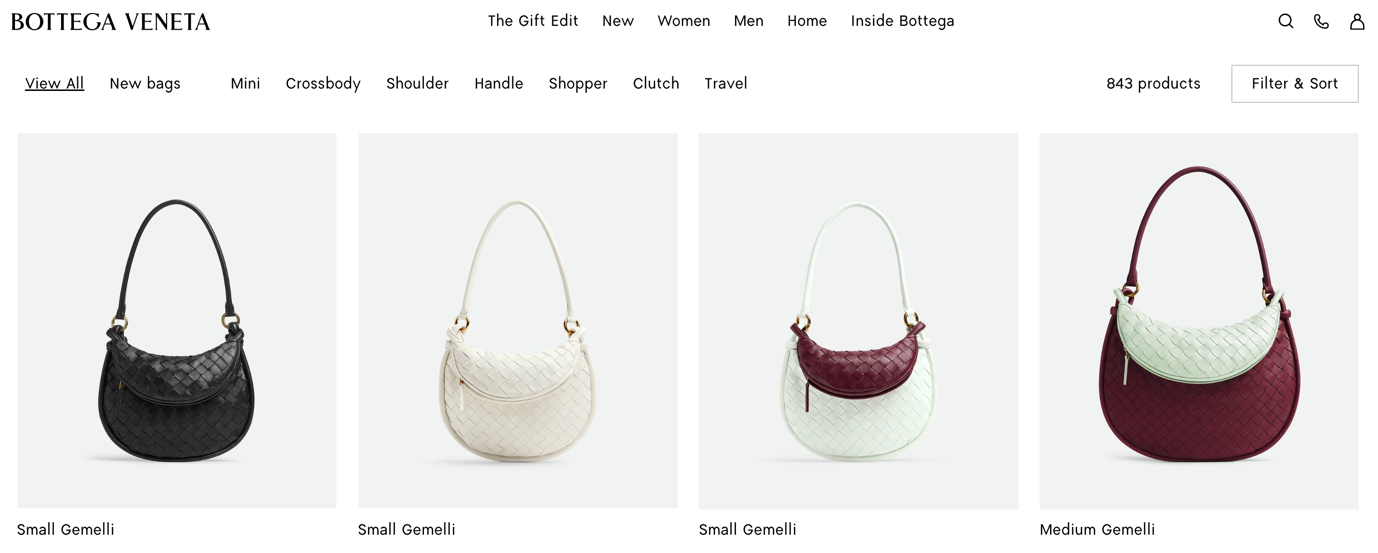
Conversely, a startup focused on innovation may benefit from modern web design with vibrant colors and cutting-edge graphics. Experienced web design companies will do their research and unearth critical insights that help guide the web design process.
This translation of brand identity into web design isn’t merely about visual appeal; it’s a strategic effort to create a consistent and cohesive brand experience across all platforms. Whether it’s your physical storefront, social media, or marketing materials, the website should be an integral and seamless part of this ecosystem. This consistency strengthens brand recognition and fosters loyalty among your audience.
2.2. Beyond Aesthetics: Functionality That Fits

Focusing solely on aesthetics is like planting seeds on rocky ground; your efforts will yield little fruit.
When assessing a web design company’s capabilities, try to look beyond the surface aesthetics and into the realm of functionality. A site’s functionality is a critical component that determines how effectively it serves its purpose, i.e., generates leads, sells products, or provides information.
The importance of functionality in small business web design cannot be overstated. Look for responsive web design service providers who specialize in crafting a user experience that’s more than just visually pleasing; it must also be intuitive and user-friendly.
A well-designed website guides visitors naturally through the content. It encourages them to take the desired actions, i.e., make a purchase, sign up for a newsletter, or contact the business.
The navigation should be straightforward with a logical flow that anticipates the user’s needs. The website should load quickly; even a few seconds of delay can lead to a significant drop in user engagement.
The importance of an adaptive and responsive web design cannot be overstated. Your website should offer a uniformly excellent experience across all devices. Choose a website design company that maintains the essence of your brand, whether accessed on a desktop, tablet, or smartphone. This adaptability is a testament to a well-crafted website.
In addition to these technical aspects, the functionality of a website also encompasses how well it achieves its business objectives. This involves a strategic alignment between the website’s design and the company’s goals.
For example, an eCommerce site should have a streamlined checkout process, high-quality product images, and clear calls to action (CTAs) that drive sales. On the other hand, a website for a professional service provider should establish credibility and trust by featuring testimonials, case studies, and easy access to contact information.
Let’s consider an example: a local bookstore’s website. The primary goal here is to provide easy access to resources and information. A web design company focusing on functionality would ensure the search for books and resources is simple and intuitive. They may include features like an online catalog with advanced search filters, the ability to pre-order or request books, and a calendar for events and workshops.
The website would also be designed to be accessible to all users, including those with disabilities, ensuring compliance with web accessibility standards.
A website that excels in functionality is more than just a digital brochure; it’s an essential tool that enhances the user’s interaction with the brand and drives business success.Top of Form
3. Evaluate Their Understanding of User Experience (UX)

Evaluating a web design company’s grasp on user experience (UX) is like sizing up a chef by their understanding of flavors; it’s the core skill that turns good into great and great into excellent.
UX in web design isn’t just a buzzword; it’s the linchpin that holds the entire user journey together. A company that excels in UX design doesn’t just make websites that look good; they create digital experiences that feel intuitive, satisfying, and tailored to the user’s needs.
When delving into a web design company’s approach to UX, the first thing to look for is their methodology. How do they start their design process? The best answers you can hear involve research. Lots of it.
This research shouldn’t just encompass general market trends; it must also offer a deep dive into user personas for a better understanding of the target audience’s behaviors, preferences, and pain points.
Are they asking the right questions about your audience? Are they interested in the journey your customers take from landing on your website to completing an action? These are signs of a company that prioritizes UX in its designs.
Another critical aspect of UX is usability. A website may have the most stunning visuals, but if users can’t find what they’re looking for easily, it’s akin to a maze with no exit.
Evaluate how the company ensures the usability of its designs. Do they talk about navigation structures, content hierarchies, and information architecture? Are they considering the accessibility of the website for users with disabilities? These considerations are essential in creating a site that’s not just appealing but also functional and inclusive.
Effective UX is also about creating an emotional connection with the user. It’s about understanding and anticipating what the user wants to accomplish and making that journey as enjoyable and efficient as possible.
For example, an eCommerce website shouldn’t only make it easy to browse products but also make the process of selection, review, and purchase a seamless and pleasurable experience.
This could involve intuitive product filters, clear and enticing product descriptions, and a hassle-free checkout process.
It’s also important to note that a company that understands UX will not view a website as a static product but as an evolving entity. They should be interested in how the website performs post-launch. They must also use tools like heat maps, analytics, and user feedback to continuously refine and improve the user experience.
4. Look for Responsive Design Expertise
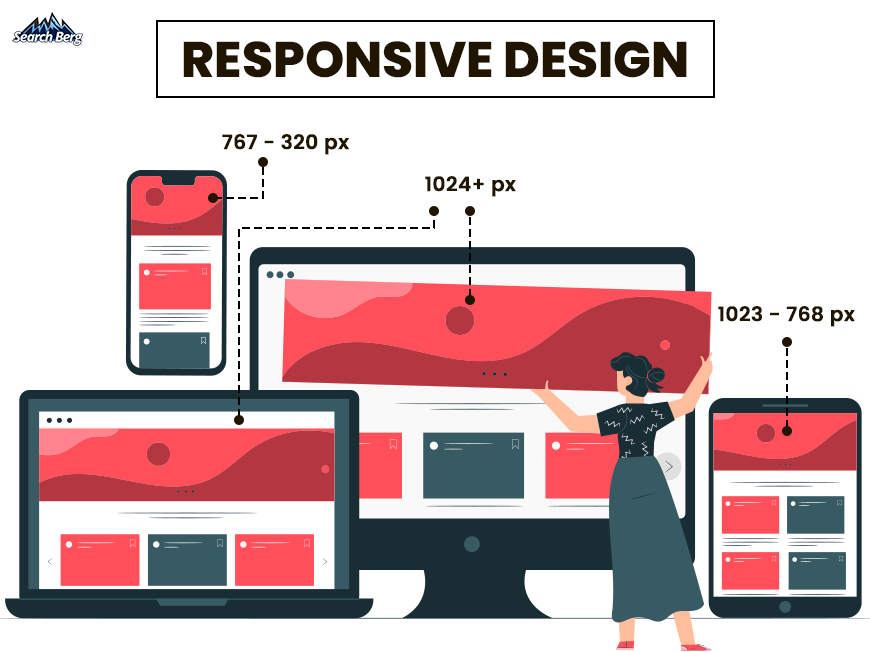
Looking for responsive web design services is like ensuring your all-terrain vehicle can handle every type of road condition; it’s about preparedness and adaptability.
The hallmark of a web design company with robust, responsive design expertise is its approach to a site’s fluidity. They understand that great desktop design doesn’t always translate well to a smaller screen. Their focus is on creating designs that are flexible and fluid. The goal is to ensure that the content, images, and other elements scale and rearrange themselves effectively to provide a consistent experience, no matter the device.
This expertise also extends to the consideration of touch interfaces in mobile devices. A company adept in responsive web design recognizes that navigation on a touchscreen needs to be intuitive and accessible with clickable elements sized appropriately for fingers(not just mouse cursors).
They pay attention to the ergonomics of mobile usage and design interfaces that aren’t just visually appealing on a small screen but also comfortable and practical to interact with.
Furthermore, responsive design doesn’t just mean you scale down for smaller screens; it also entails an understanding of the different contexts in which a website is accessed.
A company with deep expertise in this area will consider how the user’s needs may change when accessing a site on mobile versus desktop. For instance, a user on mobile may be more likely to need quick access to contact information or location details. A desktop user, on the other hand, may be more inclined to browse in-depth content.
Another key aspect of responsive design is performance optimization. Mobile users often have varying internet speeds and data limitations. A skilled website design company will optimize images and other resources for faster loading times on mobile devices. They’ll ensure that your site performs efficiently even on slower connections.
It’s important to remember that responsive design is an ongoing process. You can’t just design a site that looks good on today’s devices and call it a day; your strategy must cater to future devices and screen sizes as well. This foresight involves writing scalable code and using forward-thinking design principles that can accommodate new technologies and trends.
Let’s not forget about the SEO implications. Google and other search engines favor mobile-friendly websites. This isn’t just hearsay; it’s factual information.
Choose a website design company that goes the extra mile to ensure your site adheres to the best practices for mobile SEO. The outcome? Your site’s visibility and search rankings will improve as well.
5. Consider Their SEO Knowledge
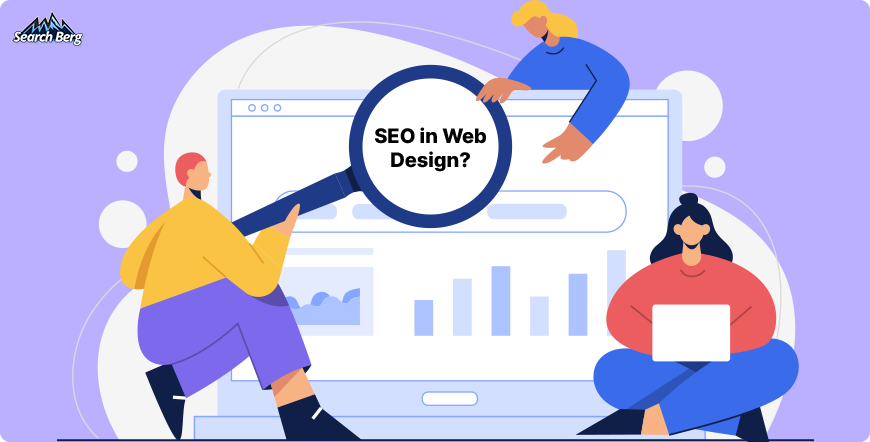
SEO savviness isn’t just an asset; it’s a necessity.
A website that’s a masterpiece in design but a ghost on search engine result pages (SERPs) is like a star that never shines bright enough to be seen in the night sky.
In this intricate game of digital visibility, choosing a website design company adept at SEO is pivotal. You don’t just want to walk away with a website; you want to make sure your website is found, seen, and visited.
Let’s explore two fundamental areas that showcase a web design company’s expertise in intertwining the art of design with the science of SEO.
5.1. Understanding the Interplay Between Design and SEO
Understanding the interplay between design and SEO is like tuning a piano for a concert; every element needs to be in perfect harmony for a flawless performance.
A web design company that masters this interplay knows that every design choice has an SEO consequence (whether it’s the site’s layout, its use of images, or even the font size).
Let’s start with the structure. A well-structured website is a delight both for web users and search engines.
Skilled design teams organize content in a clear, logical manner using header tags effectively to enhance readability and SEO.
They understand that search engines, much like busy city dwellers, appreciate clear signs and directions. Headers aren’t just visual aids; they’re signposts that guide search engines through the content and indicate what’s important.
Then comes the speed. A slow-loading website is a surefire way to lose audience interest. It’s like a slow-ticking clock in a high-speed train station.
Search engines know this all too well. Savvy web design teams optimize images and graphics to ensure they add visual appeal without weighing down the site’s loading speed. They strike the perfect balance between visual richness and technical efficiency.
But what about content? After all, in the realm of SEO, content reigns supreme.
SEO-informed design teams integrate content seamlessly into the design. They ensure that it’s not just a block of text but an integral part of the overall user experience. They enhance the content’s visibility and effectiveness using design elements like call-to-action (CTA) buttons and infographics to make the content more engaging and easy to navigate.
Accessibility also plays a pivotal role. It’s important to remember that search engines favor websites that are accessible to all users (including those with disabilities). This means incorporating design elements like alt text for images to aid visually impaired users and help search engines understand the images’ context and relevance.
And let’s not forget about mobile optimization. With the increasing prevalence of mobile browsing, a website that’s optimized for mobile is essential for good SEO. This means more than just making sure the site looks good on a smaller screen; it involves ensuring that the mobile version retains all the essential features and content of the desktop version. The goal is to provide a seamless experience to users on the go.
5.2. SEO Beyond Launch: Keeping Up with the Evolving Landscape
A professional website design company that understands the importance of SEO beyond the launch knows that the digital world does not stand still. Ever.
Algorithms update, user behaviors shift, and what worked yesterday may not work tomorrow. It’s a game of staying ahead of the curve. Constantly.
This proactive approach begins with an acknowledgment that SEO is an ongoing commitment. The real work begins after the launch. This is when you ensure the website continues to meet search engines’ changing criteria through regular audits and tweaks.
Content optimization is a significant aspect of this post-launch SEO game. Fresh, relevant, value-added, and engaging content is the lifeblood of a good SEO strategy. A web design company savvy in SEO will often suggest a content calendar that aligns with trending keywords and user interests. They ensure that your website remains the go-to resource for your audience.
Then there’s the technical side of things. The digital world is in a constant state of flux, with new technologies and browsing methods emerging regularly. A company committed to SEO beyond launch will monitor these changes and make necessary adjustments to the website. Whether it’s optimizing for voice search, ensuring compatibility with new browser updates, or adapting to new mobile devices, they’ll keep the website technologically attuned to the times.
Another critical element is the analysis of user data and feedback. By studying how users interact with the site, where they spend most of their time, and where they drop off, adjustments can be made to enhance the user experience and, by extension, SEO.
This data-driven approach ensures that the website evolves based on real user behavior and preferences; it becomes a continually improving entity.
Let’s not forget the importance of backlinks in SEO. A foresighted web design company will often advise on or even assist in a backlink strategy that increases the site’s authority and visibility. They may focus on creating shareable content, engaging with online communities, or other methods that encourage external sites to link back to the website.
Adapting to SEO’s evolving landscape also means staying informed about and compliant with the latest guidelines and regulations, e.g., those regarding privacy and data protection. In a world increasingly conscious of digital rights, a website that respects these guidelines ranks better and earns the trust of its users.
SEO beyond launch is a continuous journey of adaptation and refinement. A web design company that excels in this area views your website as a living entity that requires ongoing care to thrive in the digital ecosystem.
Recommended Read: The Role of SEO in Modern Web Design: How to Dominate SERPs
6. Scrutinize Their Technical Skills
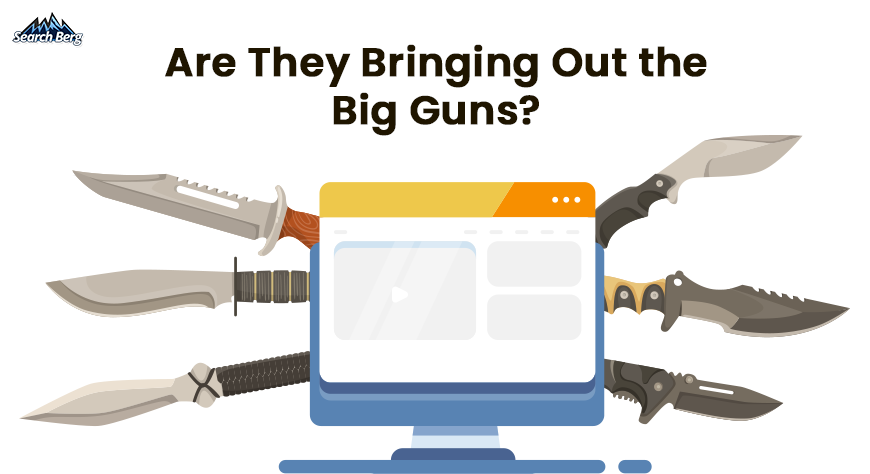
First and foremost, an adept web design company should be fluent in the core languages of web development: HTML, CSS, and JavaScript. These are the foundational building blocks of the web. HTML (HyperText Markup Language) structures the content on the web, CSS (Cascading Style Sheets) handles the presentation aspect, and JavaScript adds interactivity. A firm grasp of these languages is non-negotiable.
However, the technical prowess required in the modern web design landscape goes far beyond these basics. A proficient web design team will also be skilled in server-side languages like PHP, Python, or Ruby. These languages are essential for more complex website functionalities, e.g., data processing and database interactions.
Additionally, expertise in database technologies like MySQL, MongoDB, or SQL Server is often essential (particularly for websites that handle a significant amount of data or user interactions).
Another critical area is understanding content management systems (CMS). Platforms like WordPress, Joomla, or Drupal are staples in web design. And for good reason. They offer flexibility and ease of use for website owners. A web design company skilled in these platforms can deliver websites that aren’t just technically sound but also user-friendly. The outcome? Clients can manage their content effectively.
Let’s not forget about the ever-important aspect of website security. A web design company’s ability to implement robust security measures is paramount. This includes knowledge of SSL certificates, data encryption, secure payment gateways for eCommerce sites, and regular security updates. It’s the digital equivalent of ensuring that all the doors and windows are locked in a house.
A forward-looking web design company will also keep abreast of emerging technologies and trends, such as AI and machine learning, to stay ahead in the digital game. They may leverage these technologies to create personalized user experiences or to gain deeper insights into user behavior.
7. Analyze Their Communication and Collaboration Style
When choosing a website design company, don’t overlook the importance of their communication and collaboration style. It’s a critical aspect that can greatly influence the success of your project.
A company’s ability to effectively communicate and collaborate ensures that your ideas are accurately translated into the final product. It also makes the journey from concept to completion smooth and enjoyable.
Effective communication is the bedrock of any successful web design project. It begins with the initial stages of the project; this is when the web design team should actively listen to your needs, preferences, and objectives. This is more than just a cursory nod to your ideas; they must engage in a meaningful dialogue where your vision is understood and valued.
Look for a company that asks insightful questions, offers professional guidance, and keeps you informed throughout the process.
The way a company communicates during the design process can be a telltale sign of its professionalism and customer service approach. Frequent updates, clear explanations of technical aspects, and responsiveness to your queries and feedback are essential traits.
A good design team should not only be good at talking but also excellent at listening. They should be able to interpret your feedback and adjust the design accordingly.
Collaboration is equally important. The ideal web design agency should work with you as a partner (not just a service provider). This collaborative approach involves incorporating your feedback at every stage and ensuring that you are an integral part of the design process. They must create a synergy between your business knowledge and their design expertise.
A collaborative company will value your input and encourage your participation. The process will feel more like a joint effort with a shared goal than a singular effort with the web design provider’s vision on a lofty pedestal.
The manner in which a web design company handles challenges and setbacks speaks volumes about its communication and collaboration style. Look for website designers who maintain transparency when issues arise and work with you to find solutions. It’s important that they communicate any challenges proactively and collaborate with you to overcome them. The project must stay on track.
A practical example of effective communication and collaboration can be seen in how a company handles revisions and feedback. A web design team that’s open to your suggestions and makes the revision process easy and efficient demonstrates a commitment to collaboration and customer satisfaction. They should provide you with various design options, explain the rationale behind their choices, and be receptive to your preferences and modifications.
8. Look for Client Testimonials and References
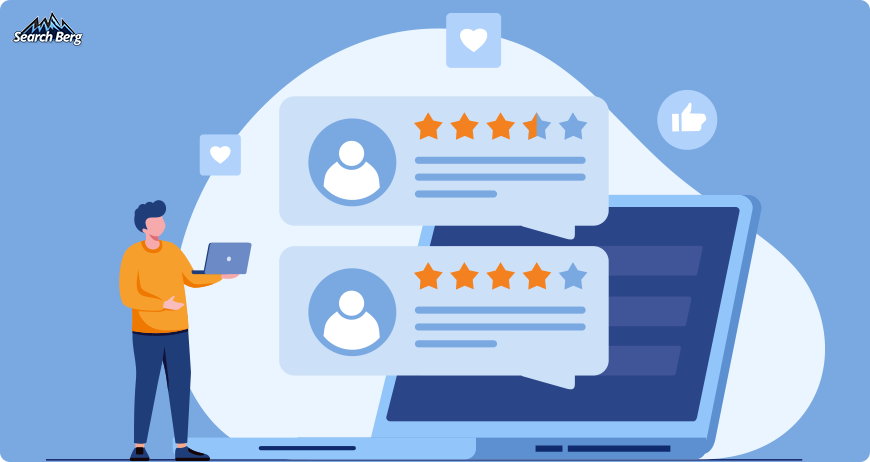
Never jump blindly into web design and development services without reading reviews first; they’ll give you a glimpse of what to expect and the confidence to proceed.
Testimonials and references from past clients are invaluable assets. They provide honest insights into the company’s capabilities, work ethic, and the kind of relationships they foster with their clients.
A web design company that boasts a portfolio of positive testimonials and is willing to provide references demonstrates confidence in their work and transparency in their operations. These testimonials and references aren’t just words of praise; they’re endorsements of the company’s ability to deliver quality work and an excellent client experience.
When looking at testimonials, pay attention to the specifics. Are clients praising the company for their innovative designs, attention to detail, or exceptional customer service? Maybe they’re highlighting the company’s ability to deliver projects on time and within budget.
These details can give you a clearer picture of the company’s strengths and what they may bring to your project.
And let’s not ignore the power of references; they take it a step further by allowing you to engage in direct conversations with past clients. This is your opportunity to ask specific questions about the company’s working style, communication practices, and ability to handle challenges.
- How did they collaborate with the client?
- Were they receptive to feedback?
- How did they handle any setbacks?
This firsthand account can be far more telling than any promotional content on the company’s website!
Client testimonials and references can also shed light on the long-term value the company provides. It’s one thing to create a visually appealing website, but it’s another to build one that performs well over time.
Look for testimonials that mention follow-up support, the website’s performance post-launch, and the overall impact on the client’s business. This indicates a web design company’s commitment to a site’s lasting success.
It’s also important to look for testimonials from a wide range of industries. This diversity speaks to the company’s flexibility and ability to adapt its skills to different contexts. It shows that they don’t just apply a one-size-fits-all approach but take the time to understand each client’s unique needs and tailor their services accordingly.Top of Form
9. Assess Their Project Management and Timelines

Assessing a web design company’s prowess in project management and their adherence to timelines is like ensuring a pilot not only knows how to fly but also excels in navigation and timekeeping.
It’s about having the confidence that your project will reach its destination in style and on schedule!
In the web design journey, efficient project management and strict adherence to timelines are as important as design and development skills. The ability to manage projects effectively is a telltale sign of a web design company’s professionalism and experience.
It involves more than just dividing the work into tasks and assigning deadlines. It’s about how they orchestrate the entire process from start to finish. This includes clear communication of milestones, risk management, resource allocation, and maintaining a balance between speed and quality.
One of the first things to inquire about is their project management methodology. Are they following a tried-and-tested approach? Or do they have a unique system tailored to their workflow?
Understanding their methodology will give you an idea of how they plan, execute, and monitor projects.
Agile methodologies, for instance, are known for their flexibility and frequent iterations. Waterfall is more linear and sequential. Each has its own strengths. The company’s choice can reflect how it handles project dynamics.
Recommended Read: Agile vs. Waterfall Methodology
The company’s track record with timelines is closely tied to project management. It’s one thing to promise a quick turnaround time; it’s another to consistently deliver on that promise.
Take a deeper dive into their history with past projects. Were they completed on time? If there were delays, which are often inevitable, how were they handled?
The ability to stick to timelines isn’t just a matter of speed; it’s a reflection of their planning skills, ability to foresee and mitigate challenges, and respect for clients’ schedules and dependencies.
Let’s say a web design agency is working on a website revamp for a seasonal event. The company must not only design and develop the site but also ensure it’s fully operational well before the event. This requires meticulous planning, coordination with various stakeholders, and a keen eye on the deadline. Any delay in such a project doesn’t just mean a missed deadline; it could mean a missed opportunity.
Assessing a web design company’s project management and timelines is about gauging its ability to deliver quality work within a reasonable timeframe. It’s about ensuring they have the skills, processes, and discipline to manage your project efficiently from kickoff to launch.
This assessment is imperative; it can mean the difference between a project that sails smoothly and one that feels like an endless voyage. Take your time, ask the right questions, and make the right call for your business.
10. Check for a Comprehensive Approach to Web Design
When scouting for a web design company, you’re not just looking for someone who can whip up a pretty website. You need a team that’s like a Swiss Army knife: versatile, resourceful, and equipped for every scenario.
A comprehensive approach to web design is about finding a team that doesn’t just piece together a site like a flat-pack furniture set but crafts a digital ecosystem tailored to your business’s unique blueprint.
Let’s say you’re opening a café. You wouldn’t just think about the kind of coffee you’ll serve; you’d also consider the layout, the menu, the ambiance, and even the type of music that would play in the background.
A comprehensive web design approach considers every element that affects the user’s experience on your site. The focus isn’t just on putting together an eye-catching homepage; it’s on creating an environment where your visitors feel engaged, understood, and ready to take action.
This approach starts right from the get-go. A web design company with a comprehensive strategy will dive deep into your business goals, target audience, and market competition. They’ll act like detectives and gather every bit of information that can help them create a website that’s not just a digital presence but a strategic asset.
Opting for a comprehensive approach to web design means choosing a team that sees the bigger picture. They know that a website is a dynamic part of your business growth instead of just a static digital brochure. They’ll craft a digital experience that resonates with your audience and aligns with your business objectives. The outcome? Every click will bring value to your business and delight to your visitors!
The Hunt for the Right Web Design Company Ends with Search Berg

It’s one thing to arm yourself with knowledge about what to look for and quite another to actually find that rare gem in a vast sea of options.
We’re here to make that task easier for you.
Search Berg, an award-winning player in the web design arena, has a track record of developing over 8,000 websites. Our expertise isn’t just proven; it’s polished. We craft digital experiences tailored to the unique fabric of each business we work with.
At Search Berg, the focus is on creating websites that aren’t just visually stunning but also highly functional, user-friendly, and optimized for search engines. We understand that a website is the digital heartbeat of a business. Our team pours its expertise into making sure this heartbeat is strong and steady.
Our skilled website designers are equipped to handle every aspect of web design and development. We ensure that no stone is left unturned in creating a website that exceeds your expectations.
Are you ready to work with experts who understand your vision and deliver excellent results? Explore our website design and development packages to get started! Our services start at $299 and come with a complete money-back guarantee. Let’s kick things off with a free consultation!














